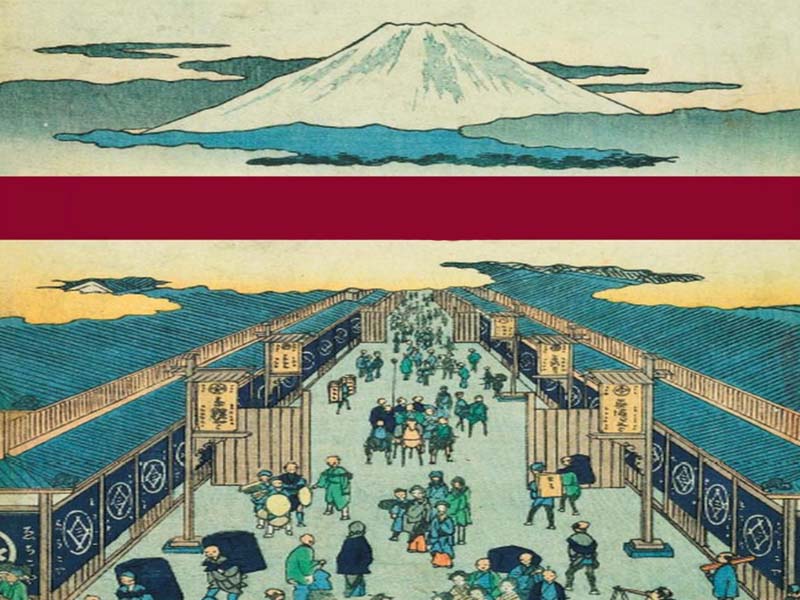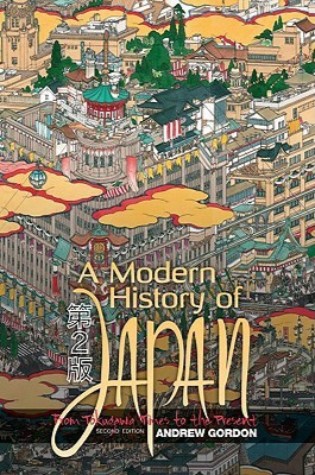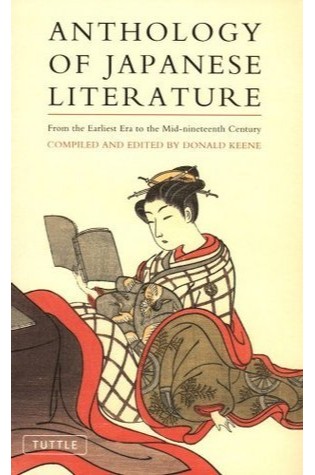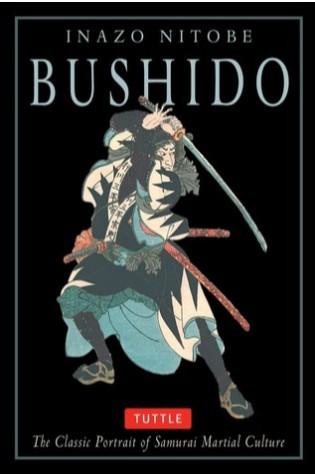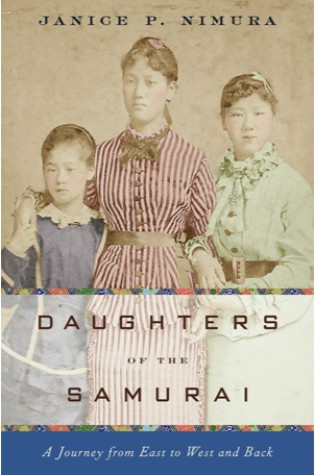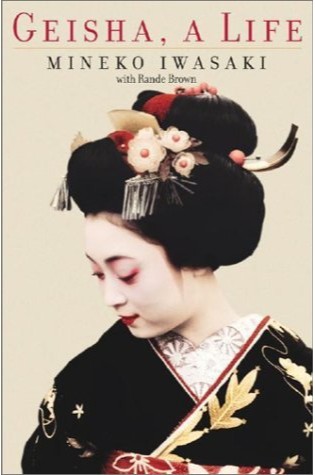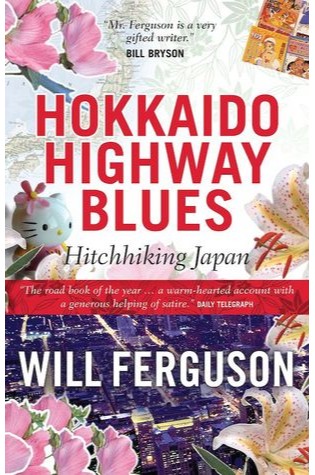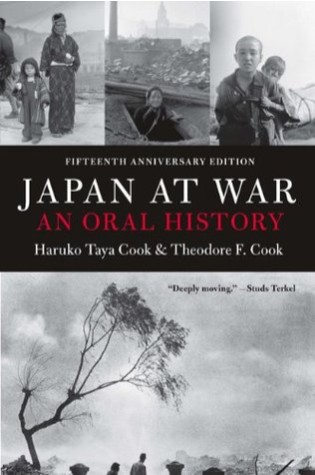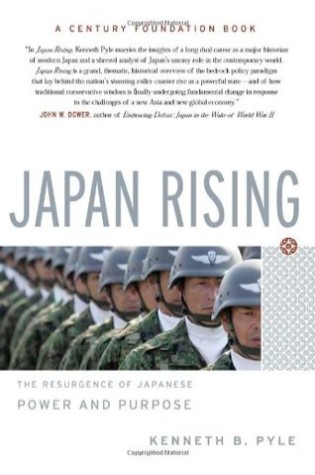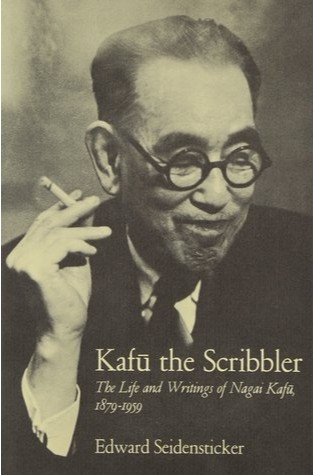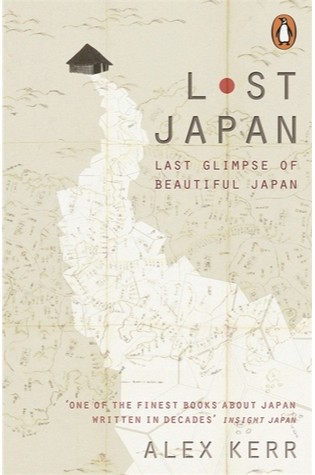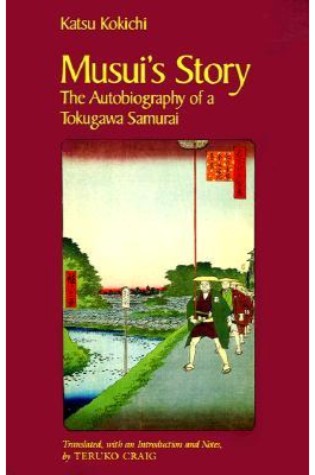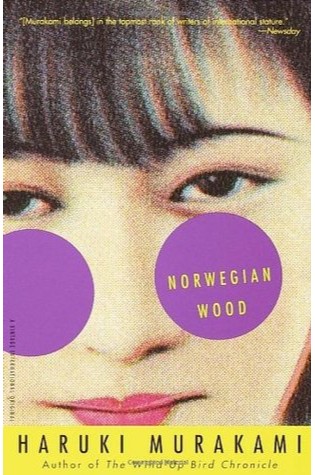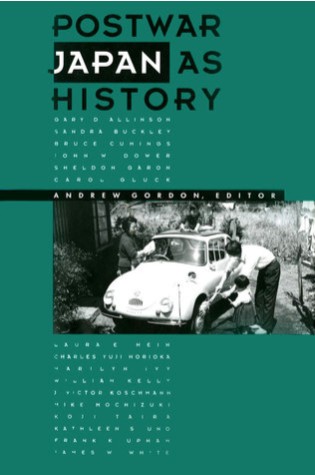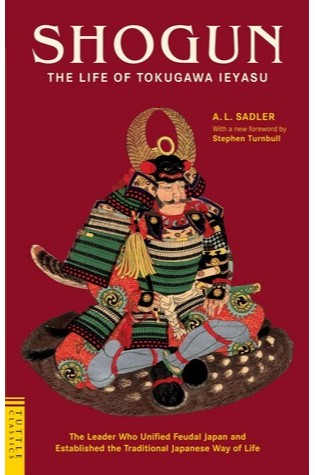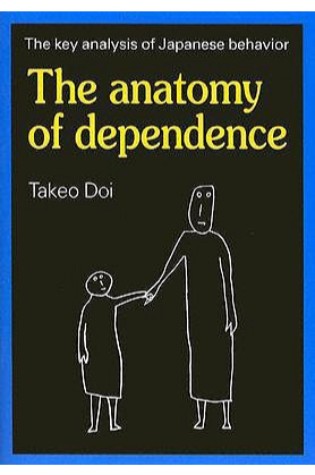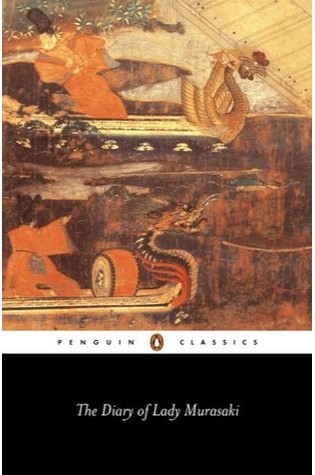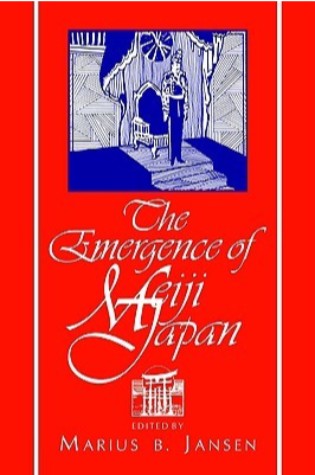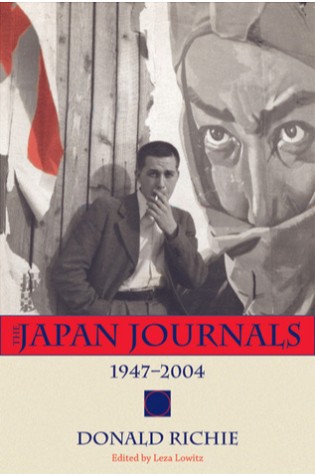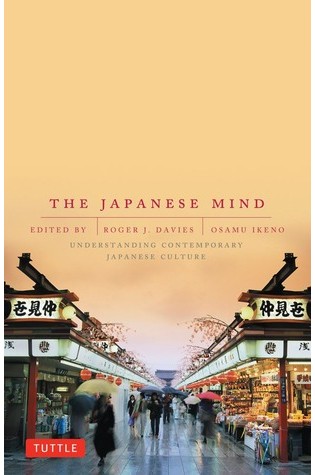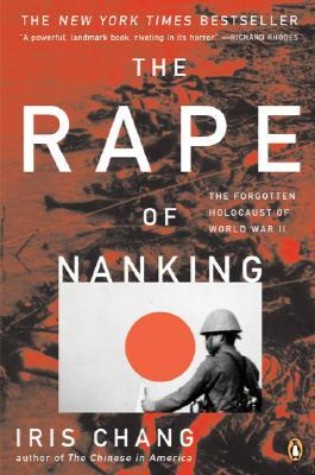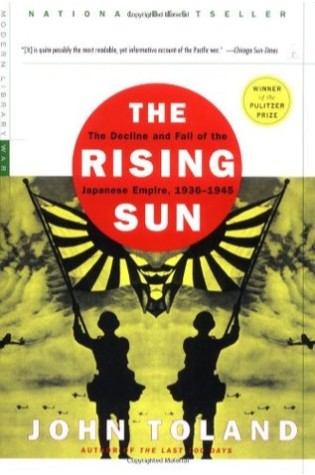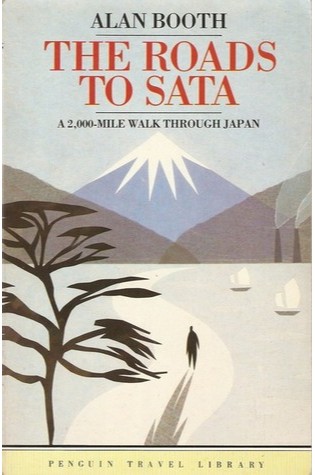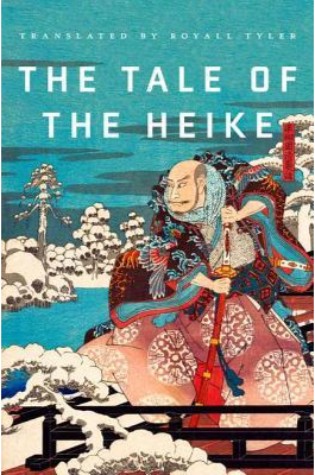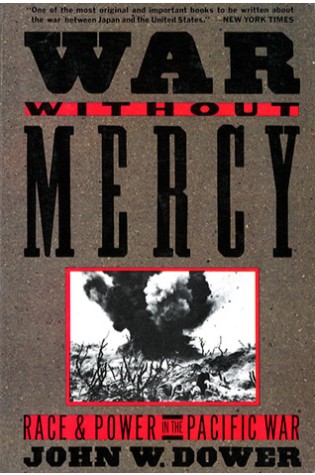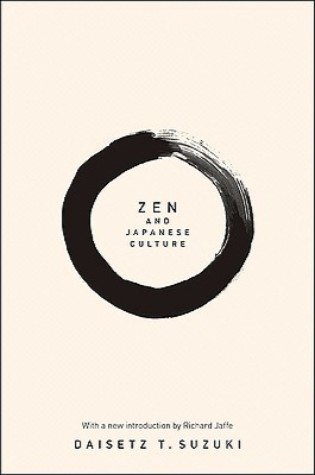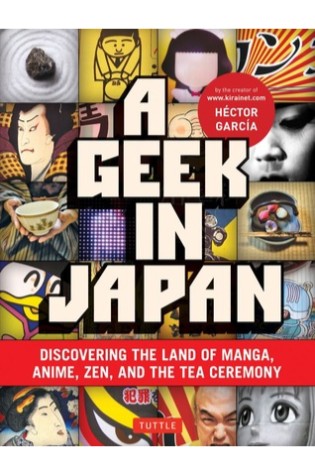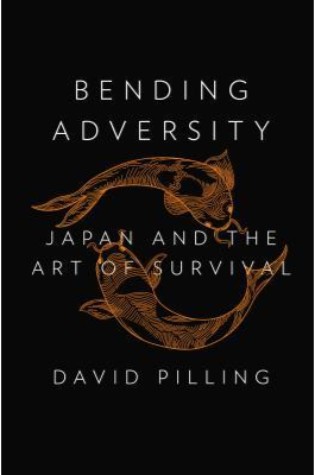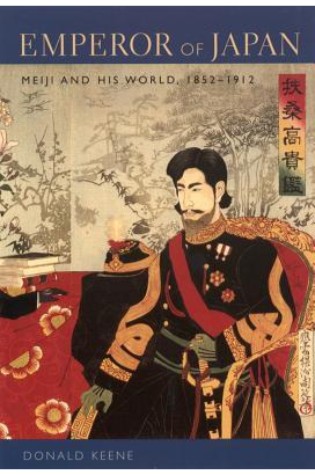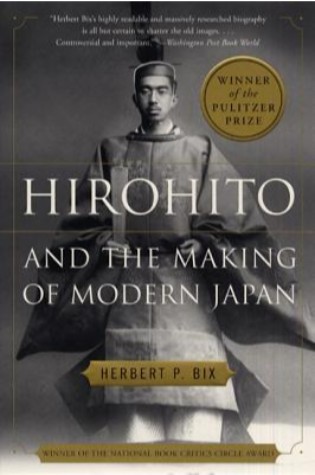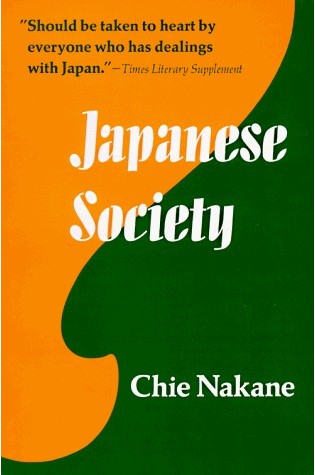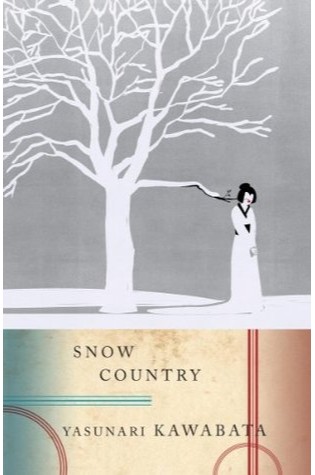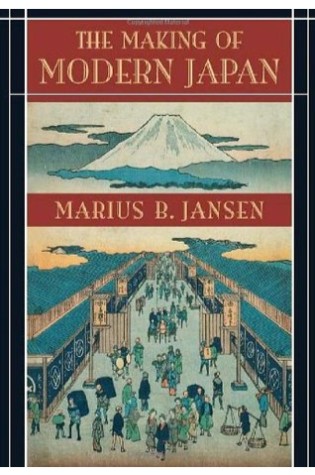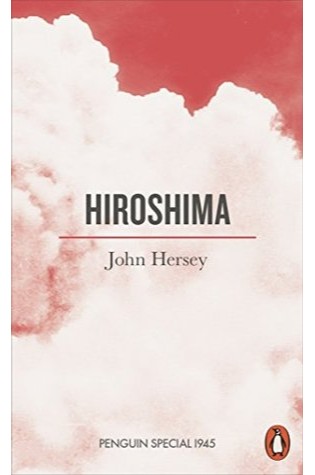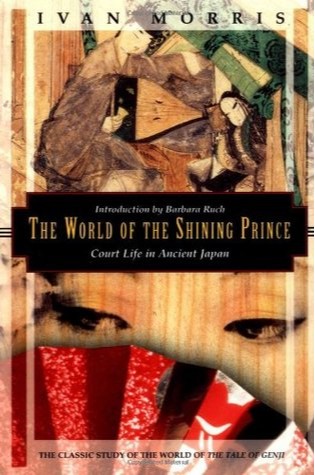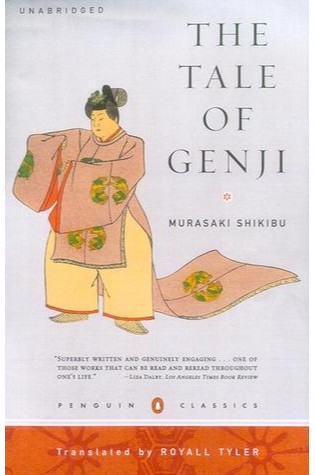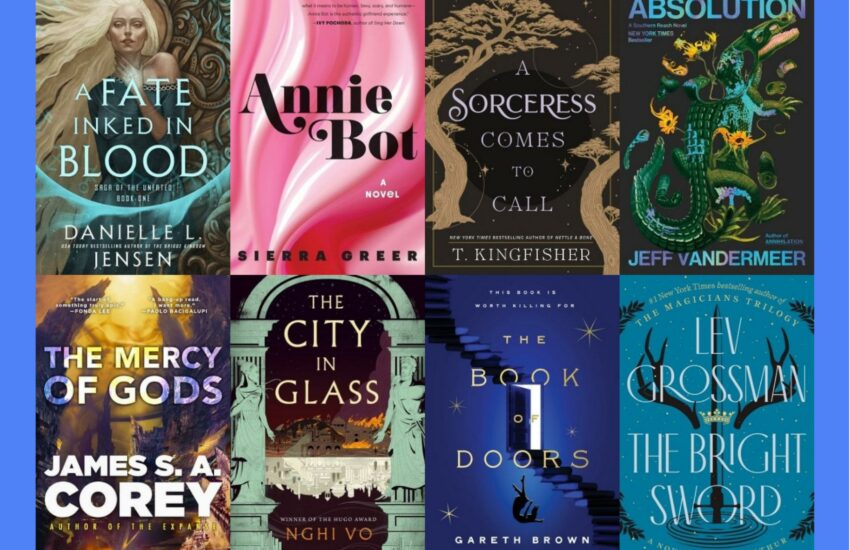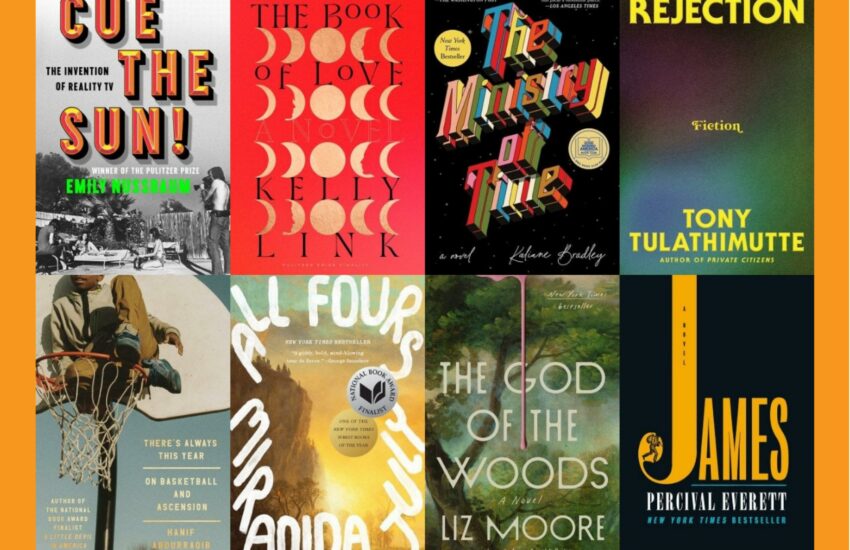The Best Japanese History And Nonfiction Books Of All-Time
“What are the best books about Japanese History?” We looked at 311 of the top books, aggregating and ranking them so we could answer that very question!
The top 46 titles, all appearing on 2 or more “Best Nonfiction & History” Japan book lists, are ranked below by how many lists they appear on. The remaining 250+ titles, as well as the lists we used are in alphabetical order at the bottom of the page.
Happy Scrolling!
Top 46 Japan Nonfiction & History Books
46 .) A Modern History of Japan: From Tokugawa Times to the Present by Andrew Gordon
Lists It Appears On:
- Goodreads 2
- Japan Visitor
“In The Modern History of Japan: From Tokugawa Times to the Present, Andrew Gordon paints a richly nuanced and strikingly original portrait of the last two centuries of Japanese history. He takes students from the days of the shogunate–the feudal overlordship of the Tokugawa family–through the modernizing revolution launched by midlevel samurai in the late nineteenth century; the adoption of Western hairstyles, clothing, and military organization; and the nation’s first experiments with mass democracy after World War I. Gordon offers the finest synthesis to date of Japan’s passage through militarism, World War II, the American occupation, and the subsequent economic rollercoaster. But the true ingenuity and value of Gordon’s approach lies in his close attention to the non-elite layers of society. Here students will see the influence of outside ideas, products, and culture on home life, labor unions, political parties, gender relations, and popular entertainment. The book examines Japan’s struggles to define the meaning of its modernization, from villages and urban neighborhoods, to factory floors and middle managers’ offices, to the imperial court. Most importantly, it illuminates the interconnectedness of Japanese developments with world history, demonstrating how Japan’s historical passage represents a variation of a process experienced by many nations and showing how the Japanese narrative forms one part of the interwoven fabric of modern history.
With a sustained focus on setting modern Japan in a comparative and global context, The Modern History of Japan is ideal for undergraduate courses in modern Japanese history, Japanese politics, Japanese society, or Japanese culture.”
Purchase / Learn More
45 .) Anthology of Japanese Literature: From the Earliest Era to the Mid-Nineteenth Century by Donald Keene
Lists It Appears On:
- Boutique Japan
- NPR
The sweep of Japanese literature in all its great variety was made available to Western readers for the first time in this anthology. Every genre and style, from the celebrated No plays to the poetry and novels of the seventeenth century, find a place in this book. An introduction by Donald Keene places the selections in their proper historical context, allowing the readers to enjoy the book both as literature and as a guide to the cultural history of Japan. Selections include “Man’yoshu” or “Collection of Ten Thousand Leaves” from the ancient period; “Kokinshu” or “Collection of Ancient and Modern Poetry,” “The Tosa Diary” of Ki No Tsurayuki, “Yugao” from “Tales of Genji” of Murasaki Shikibu, and “The Pillow Book” of Sei Shonagon from the Heian Period; “The Tale of the Heike” from the Kamakura Period; Plan of the No Stage, “Birds of Sorrow” of Seami Motokiyo, and “Three Poets at Minase” from the Muromachi Period; and Sections from Basho, including “The Narrow Road of Oku,” “The Love Suicides at Sonezaki” by Chikamatsu Monzaemon, and Waka and haiku of the Tokugawa Period.
Purchase / Learn More
44 .) Bushido: The Soul of Japan. A Classic Essay on Samurai Ethics by Inazo Nitobe
Lists It Appears On:
- Goodreads
- The Nippon Foundation
A century ago, when Japan was transforming itself from an isolated feudal society into a modern nation, a Japanese educator queried about the ethos of his people composed this seminal work, which with his numerous other writings in English made him the best, known Japanese writer in the West during his lifetime.
Purchase / Learn More
43 .) Daughters of the Samurai: A Journey from East to West and Back by Janice P. Nimura
Lists It Appears On:
- Goodreads
- Japan Visitor
“In 1871, five young girls were sent by the Japanese government to the United States. Their mission: learn Western ways and return to help nurture a new generation of enlightened men to lead Japan.
Raised in traditional samurai households during the turmoil of civil war, three of these unusual ambassadors―Sutematsu Yamakawa, Shige Nagai, and Ume Tsuda―grew up as typical American schoolgirls. Upon their arrival in San Francisco they became celebrities, their travels and traditional clothing exclaimed over by newspapers across the nation. As they learned English and Western customs, their American friends grew to love them for their high spirits and intellectual brilliance.”
Purchase / Learn More
42 .) Essays in Idleness: The Tsurezuregusa of Kenko by Donald Keene
- Boutique Japan
- NPR
Despite the turbulent times in which he lived, the Buddhist priest Kenkō met the world with a measured eye. As Emperor Go-Daigo fended off a challenge from the usurping Hojo family, and Japan stood at the brink of a dark political era, Kenkō held fast to his Buddhist beliefs and took refuge in the pleasures of solitude. Written between 1330 and 1332, Essays in Idleness reflects the congenial priest’s thoughts on a variety of subjects. His brief writings, some no more than a few sentences long and ranging in focus from politics and ethics to nature and mythology, mark the crystallization of a distinct Japanese principle: that beauty is to be celebrated, though it will ultimately perish. Through his appreciation of the world around him and his keen understanding of historical events, Kenkō conveys the essence of Buddhist philosophy and its subtle teachings for all readers. Insisting on the uncertainty of this world, Kenkō asks that we waste no time in following the way of Buddha.
Purchase / Learn More
41 .) Geisha, a Life by Mineko Iwasaki
- Goodreads
- Goodreads 2
“Many say I was the best geisha of my generation,” writes Mineko Iwasaki. “And yet, it was a life that I found too constricting to continue. And one that I ultimately had to leave.” Trained to become a geisha from the age of five, Iwasaki would live among the other “women of art” in Kyoto’s Gion Kobu district and practice the ancient customs of Japanese entertainment. She was loved by kings, princes, military heroes, and wealthy statesmen alike. But even though she became one of the most prized geishas in Japan’s history, Iwasaki wanted more: her own life. And by the time she retired at age twenty-nine, Iwasaki was finally on her way toward a new beginning.
Purchase / Learn More
40 .) Hokkaido Highway Blues: Hitchhiking Japan by Will Ferguson
- Goodreads
- Wanderlust
It had never been done before. Not in 4000 years of Japanese recorded history had anyone followed the Cherry Blossom Front from one end of the country to the other. Nor had anyone hitchhiked the length of Japan. But, heady on sakura and sake, Will Ferguson bet he could do both.
Purchase / Learn More
39 .) In Praise of Shadows by Jun’ichirō Tanizaki
- Departures
- The Nippon Foundation
An essay on aesthetics by the Japanese novelist, this book explores architecture, jade, food, and even toilets, combining an acute sense of the use of space in buildings. The book also includes descriptions of laquerware under candlelight and women in the darkness of the house of pleasure.
Purchase / Learn More
38 .) Japan at War: An Oral History by Haruko Taya Cook and Theodore F. Cook
- Boutique Japan
- Goodreads 2
“Following the release of Clint Eastwood’s epic film Letters from Iwo Jima, which was nominated for the Oscar for Best Picture, there has been a renewed fascination and interest in the Japanese perspective on World War II. This pathbreaking work of oral history is the first book ever to capture—in either Japanese or English—the experience of ordinary Japanese people during the war.
In a sweeping panorama, Haruko Taya Cook and Theodore F. Cook take us from the Japanese attacks on China in the 1930s to the Japanese home front during the inhuman raids on Tokyo, Hiroshima, and Nagasaki, offering the first glimpses of how the twentieth century’s most deadly conflict affected the lives of the Japanese population.”
Purchase / Learn More
37 .) Japan Rising: The Resurgence of Japanese Power and Purpose by Kenneth B. Pyle
- GaijinPot
- The Nippon Foundation
“Japan is on the verge of a sea change. After more than fifty years of national pacifism and isolation including the “”lost decade”” of the 1990s, Japan is quietly, stealthily awakening. As Japan prepares to become a major player in the strategic struggles of the 21st century, critical questions arise about its motivations. What are the driving forces that influence how Japan will act in the international system? Are there recurrent patterns that will help explain how Japan will respond to the emerging environment of world politics?
American understanding of Japanese character and purpose has been tenuous at best. We have repeatedly underestimated Japan in the realm of foreign policy. Now as Japan shows signs of vitality and international engagement, it is more important than ever that we understand the forces that drive Japan. In Japan Rising, renowned expert Kenneth Pyle identities the common threads that bind the divergent strategies of modern Japan, providing essential reading for anyone seeking to understand how Japan arrived at this moment—and what to expect in the future.”
Purchase / Learn More
36 .) Kafu the Scribbler: The Life and Writings of Nagai Kafu, 1879-1959 by Edward Seidensticker
- Five Books
- The Nippon Foundation
Purchase / Learn More
35 .) Kyoto: Seven Paths to The Heart of The City by Diane Durston
- Boutique Japan
- Japan Visitor
What better way to see Kyoto than at dawn, when the back streets and alleys of this 1,200-year-old city are still under the spell of the past? Old folks fuss about with their bonsai and laundry poles, pausing to chat on their way to the neighborhood shrine with flowers and morning prayers. Knock-kneed white egrets stalk the stream beds for breakfast, and the giant bronze temple bells awaken the former capital of Japan every morning as they have done for centuries.
Purchase / Learn More
34 .) Lost Japan: Last Glimpse of Beautiful Japan by Alex Kerr
- Boutique Japan
- Smart Japan Hacks
Originally written in Japanese, this passionate, vividly personal book draws on the author’s experiences in Japan over thirty years. Alex Kerr takes us on a backstage tour, as he explores the ritualized world of Kabuki, retraces his initiation into Tokyo’s boardrooms during the heady Bubble Years, tells how he stumbled on a hidden valley that became his home…and exposes the environmental and cultural destruction that is the other face of contemporary Japan.
Purchase / Learn More
33 .) Musui’s Story: Autobiography of a Tokugawa Samurai by Katsu Kokichi
- Japan Visitor
- ST Booking
A series of picaresque adventures set against the backdrop of a Japan still closed off from the rest of the world, Musui’s Story recounts the escapades of samurai Katsu Kokichi. As it depicts Katsu stealing, brawling, indulging in the pleasure quarters, and getting the better of authorities, it also provides a refreshing perspective on Japanese society, customs, economy, and human relationships.
Purchase / Learn More
32 .) Norwegian Wood by Haruki Murakami
- Boutique Japan
- Departures
“This stunning and elegiac novel by the author of the internationally acclaimed Wind-Up Bird Chronicle has sold over 4 million copies in Japan and is now available to American audiences for the first time. It is sure to be a literary event.
Toru, a quiet and preternaturally serious young college student in Tokyo, is devoted to Naoko, a beautiful and introspective young woman, but their mutual passion is marked by the tragic death of their best friend years before. Toru begins to adapt to campus life and the loneliness and isolation he faces there, but Naoko finds the pressures and responsibilities of life unbearable. As she retreats further into her own world, Toru finds himself reaching out to others and drawn to a fiercely independent and sexually liberated young woman.”
Purchase / Learn More
30 .) Postwar Japan as History by Andrew Gordon (Editor)
- Goodreads
- The Nippon Foundation
Japan’s catapult to world economic power has inspired many studies by social scientists, but few have looked at the 45 years of postwar Japan through the lens of history. The contributors to this book seek to offer such a view. As they examine three related themes of postwar history, the authors describe an ongoing historical process marked by unexpected changes, such as Japan’s extraordinary economic growth, and unanticipated continuities, such as the endurance of conservative rule. A provocative set of interpretative essays by eminent scholars, this book will appeal to anyone interested in the history of twentieth-century Japan and the dilemmas facing Japan today.
Purchase / Learn More
29 .) Shōgun by James Clavell
- Boutique Japan
- Goodreads 2
“Here is the world-famous novel of Japan that is the earliest book in James Clavell’s masterly Asian saga. Set in the year 1600, it tells the story of a bold English pilot whose ship was blown ashore in Japan, where he encountered two people who were to change his life: a warlord with his own quest for power, and a beautiful interpreter torn between two ways of life and two ways of love.
The principal figures are John Blackthorne, whose dream it is to be the first Englishman to circumnavigate the globe, to wrest control of the trade between Japan and China from Portuguese, and to return home a man of wealth and position; Toranaga, the most powerful feudal lord in Japan, who strives and schemes to seize ultimate power by becoming Shogun—the Supreme Military Dictator—and to unite the warring samurai fiefdoms under his own masterly and farsighted leadership; and the Lady Mariko, a Catholic convert whose conflicting loyalties to the Church and her country are compounded when she falls in love with Blackthorne, the barbarian intruder.”
Purchase / Learn More
28 .) Shogun: The Life of Tokugawa Ieyasu by A.L. Sadler
- Goodreads
- Goodreads 2
“Since its initial appearance, A.L.Sadler’s imposing biography of the Japanese Shogun Tokugawa Ieyasu has been recognized as an outstanding contribution to the knowledge of Japanese history. It is also considered the standard reference work on the period that saw the entrenchment of feudalism in Japan and the opening of some two and a half centuries of rigid isolation from the rest of the world.
In the course of Japanese history, there have been five great military leaders who by common consent stand out above the others of their type. Of these, two lived in the twelfth century, while the other three, Oda Nobunaga, Toyotomi Hideyoshi, and Tokugawa Ieyasu, were contemporary in the latter half of the sixteenth century. The last of these three, with whose life Mr. Sadler deals, may well be described as having perfected the shogunate system. Not only did Ieyasu found a dynasty of rulers and organize a powerful system of government, but also he rounded off his achievements by contriving before his death to arrange for his deification afterward. “
Purchase / Learn More
27 .) The Anatomy of Dependence by Takeo Doi
- Goodreads
- The Nippon Foundation
The discovery that a major concept of human feeling-easily expressed in everyday Japanese- totally resisted translation into a Western language led Dr. Takeo Doi to explore and define an area of the psyche which has previously received little attention. The resulting essay, The Anatomy of Dependence, is one of the most penetrating analyses of the Japanese mind ever written, as well as an important original contribution to psychology which transcends the boundaries of cultures and nations.
Purchase / Learn More
26 .) The Diary of Lady Murasaki by Murasaki Shikibu
- Goodreads
- Goodreads 2
The Diary recorded by Lady Murasaki (c. 973-c. 1020), author of The Tale of Genji, is an intimate picture of her life as tutor and companion to the young Empress Shoshi. Told in a series of vignettes, it offers revealing glimpses of the Japanese imperial palace – the auspicious birth of a prince, rivalries between the Emperor’s consorts, with sharp criticism of Murasaki’s fellow ladies-in-waiting and drunken courtiers, and telling remarks about the timid Empress and her powerful father, Michinaga. The Diary is also a work of great subtlety and intense personal reflection, as Murasaki makes penetrating insights into human psychology – her pragmatic observations always balanced by an exquisite and pensive melancholy.
Purchase / Learn More
25 .) The Emergence of Meiji Japan by Marius B. Jansen
- Goodreads 2
- Japan Visitor
This new edition brings together selected chapters from Volume 5 of The Cambridge History of Japan. Japan underwent momentous changes during the nineteenth century. This book chronicles the transition from Tokugawa rule, and the political process that finally ended centuries of warrior rule. It goes on to discuss the samurai rebellions against the Meiji Restoration, national movements for constitutional government that indirectly resulted in the Meiji Constitution of 1889, and Japan’s twentieth-century drive to Great Power status.
Purchase / Learn More
24 .) The Japan Journals: 1947-2004 by Donald Richie
- Boutique Japan
- Goodreads
Donald Richie has been observing and writing about Japan from the moment he arrived on New Year’s Eve, 1946. Detailing his life, his lovers, and his ideas on matters high and low, The Japan Journals is a record of both a nation and an evolving expatriate sensibility. As Japan modernizes and as the author ages, the tone grows elegiac, and The Japan Journals—now in paperback after the critically acclaimed hardcover edition—becomes a bittersweet chronicle of a complicated life well lived and captivatingly told.
Purchase / Learn More
23 .) The Japanese Mind: Understanding Contemporary Japanese Culture by Roger J. Davies and Osamu Ikeno
- Boutique Japan
- Smart Japan Hacks
Readers of this book will gain a clear understanding of what makes the Japanese, and their society, tick. Among the topics explored: aimai (ambiguity), amae (dependence upon others’ benevolence), amakudari (the nation’s descent from heaven), chinmoku (silence in communication), gambari(perseverance), giri (social obligation), haragei (literally, “belly art”; implicit, unspoken communication), kenkyo (the appearance of modesty), sempai-kohai (seniority), wabi-sabi (simplicity and elegance), and zoto (gift giving), as well as discussions of child-rearing, personal space, and the roles of women in Japanese society. It includes discussion topics and questions after each chapter.
Purchase / Learn More
22 .) The Makioka Sisters by Junichiro Tanizaki
- Boutique Japan
- NPR
“Junichirō Tanizaki’s magisterial evocation of a proud Osaka family in decline during the years immediately before World War II is arguably the greatest Japanese novel of the twentieth century and a classic of international literature.
Tsuruko, the eldest sister of the once-wealthy Makioka family, clings obstinately to the prestige of her family name even as her husband prepares to move their household to Tokyo, where that name means nothing. Sachiko compromises valiantly to secure the future of her younger sisters. The shy, unmarried Yukiko is a hostage to her family’s exacting standards, while the spirited Taeko rebels by flinging herself into scandalous romantic alliances and dreaming of studying fashion design in France. Filled with vignettes of a vanishing way of life, The Makioka Sisters is a poignant yet unsparing portrait of a family—and an entire society—sliding into the abyss of modernity. It possesses in abundance the keen social insight and unabashed sensuality that distinguish Tanizaki as a master novelist.”
Purchase / Learn More
21 .) The Narrow Road to the Deep North and Other Travel Sketches by Matsuo Basho and Nobuyuki Yuasa
- Boutique Japan
- The Nippon Foundation
In his perfectly crafted haiku poems, Basho described the natural world with great simplicity and delicacy of feeling. When he composed The Narrow Road to the Deep North, he was an ardent student of Zen Buddhism, setting off on a series of travels designed to strip away the trappings of the material world and bring spiritual enlightenment. He wrote of the seasons changin, of the smells of the rain, the brightness of the moon, and beauty of the waterfall, through which he sense mysteries of the universe. There’s seventeenth-century travel writing not only chronicle Basho’s perilous journeys through Japan, but they also capture his vision of eternity in the transient world around him.
Purchase / Learn More
20 .) The Pillow Book of Sei Shonagon by Ivan Morris
- Boutique Japan
- NPR
The Pillow Book of Sei Shonagon is a fascinating, detailed account of Japanese court life in the eleventh century. Written by a lady of the court at the height of Heian culture, this book enthralls with its lively gossip, witty observations, and subtle impressions. Lady Shonagon was an erstwhile rival of Lady Murasaki, whose novel, The Tale of Genji, fictionalized the elite world Lady Shonagon so eloquently relates. Featuring reflections on royal and religious ceremonies, nature, conversation, poetry, and many other subjects, The Pillow Book is an intimate look at the experiences and outlook of the Heian upper class, further enriched by Ivan Morris’s extensive notes and critical contextualization.
Purchase / Learn More
19 .) The Pleasures of Japanese Literature by Donald Keene
- Goodreads
- The Nippon Foundation
Perhaps no one is more qualified to write about Japanese culture than Donald Keene, considered the leading interpreter of that nation’s literature to the Western world. The author, editor, or translator of nearly three dozen books of criticism and works of literature, Keene now offers an enjoyable and beautifully written introduction to traditional Japanese culture for the general reader.
Purchase / Learn More
18 .) The Rape of Nanking by Iris Chang
- GaijinPot
- Goodreads 2
In December 1937, the Japanese army swept into the ancient city of Nanking. Within weeks, more than 300,000 Chinese civilians were systematically raped, tortured, and murdered—a death toll exceeding that of the atomic blasts of Hiroshima and Nagasaki combined. Using extensive interviews with survivors and newly discovered documents, Iris Chang has written what will surely be the definitive history of this horrifying episode. The Rape of Nanking tells the story from three perspectives: of the Japanese soldiers who performed it, of the Chinese civilians who endured it, and of a group of Europeans and Americans who refused to abandon the city and were able to create a safety zone that saved almost 300,000 Chinese. Among these was the Nazi John Rabe, an unlikely hero whom Chang calls the “Oskar Schindler of China” and who worked tirelessly to protect the innocent and publicize the horror. More than just narrating the details of an orgy of violence, The Rape of Nanking analyzes the militaristic culture that fostered in the Japanese soldiers a total disregard for human life.
Purchase / Learn More
17 .) The Rising Sun: The Decline & Fall of the Japanese Empire, 1936-45 by John Toland
- Goodreads
- Goodreads 2
“This Pulitzer Prize–winning history of World War II chronicles the dramatic rise and fall of the Japanese empire, from the invasion of Manchuria and China to the atomic bombing of Hiroshima and Nagasaki. Told from the Japanese perspective, The Rising Sun is, in the author’s words, “a factual saga of people caught up in the flood of the most overwhelming war of mankind, told as it happened—muddled, ennobling, disgraceful, frustrating, full of paradox.”
In weaving together the historical facts and human drama leading up to and culminating in the war in the Pacific, Toland crafts a riveting and unbiased narrative history. In his Foreword, Toland says that if we are to draw any conclusion from The Rising Sun, it is “that there are no simple lessons in history, that it is human nature that repeats itself, not history.””
Purchase / Learn More
16 .) The Roads to Sata: A 2000-Mile Walk Through Japan by Alan Booth
- Boutique Japan
- Goodreads
“Traveling only along small back roads, Alan Booth traversed Japan’s entire length on foot, from Soya at the country’s northernmost tip, to Cape Sata in the extreme south, across three islands and some 2,000 miles of rural Japan. The Roads to Sata is his wry, witty, inimitable account of that prodigious trek.
Although he was a city person—he was brought up in London and spent most of his adult life in Tokyo—Booth had an extraordinary ability to capture the feel of rural Japan in his writing. Throughout his long and arduous trek, he encountered a variety of people who inhabit the Japanese countryside—from fishermen and soldiers, to bar hostesses and school teachers, to hermits, drunks, and tramps. His wonderful and often hilarious descriptions of these encounters are the highlights of these pages, painting a multifaceted picture of Japan from the perspective of an outsider, but with the knowledge of an insider.”
Purchase / Learn More
15 .) The Tales of the Heike by Burton Watson (Trans.)
- Goodreads 2
- The Nippon Foundation
The Tales of the Heike provides a dramatic window onto the emerging world of the medieval samurai and recounts in absorbing detail the chaos of the battlefield, the intrigue of the imperial court, and the gradual loss of a courtly tradition. The book is also highly religious and Buddhist in its orientation, taking up such issues as impermanence, karmic retribution, attachment, and renunciation, which dominated the Japanese imagination in the medieval period.
Purchase / Learn More
14 .) War Without Mercy: Race and Power in the Pacific War by John W. Dower
- Goodreads 2
- The Nippon Foundation
Drawing on American and Japanese songs, slogans, cartoons, propaganda films, secret reports, and a wealth of other documents of the time, Dower opens up a whole new way of looking at that bitter struggle of four and a half decades ago and its ramifications in our lives today. As Edwin O. Reischauer, former ambassador to Japan, has pointed out, this book offers “a lesson that the postwar generations need most…with eloquence, crushing detail, and power.”
Purchase / Learn More
13 .) Zen and Japanese Culture by Daisetz T. Suzuki
- Boutique Japan
- Matcha Tea
One of this century’s leading works on Zen, this book is a valuable source for those wishing to understand its concepts in the context of Japanese life and art. In simple, often poetic, language, Daisetz Suzuki describes what Zen is, how it evolved, and how its emphasis on primitive simplicity and self-effacement have helped to shape an aesthetics found throughout Japanese culture. He explores the surprising role of Zen in the philosophy of the samurai, and subtly portrays the relationship between Zen and swordsmanship, haiku, tea ceremonies, and the Japanese love of nature. Suzuki’s contemplative discussion is enhanced by anecdotes, poetry, and illustrations showing silk screens, calligraphy, and examples of architecture.
Purchase / Learn More
12 .) A Geek in Japan by Hector Garcia
- Boutique Japan
- Matcha Tea
- Wanderlust
Comprehensive and well informed, it covers a wide array of topics in short articles accompanied by sidebars and numerous photographs, providing a lively digest of the society and culture of Japan. Designed to appeal to the generations of Westerners who grew up on Pokemon, manga and video games, A Geek in Japan reinvents the culture guide for readers in the Internet age.
Purchase / Learn More
11 .) Bending Adversity: Japan and the Art of Survival by David Pilling
- GaijinPot
- Goodreads
- ST Booking
Pilling’s exploration begins with the 2011 triple disaster of earthquake, tsunami, and nuclear meltdown. His deep reporting reveals both Japan’s vulnerabilities and its resilience and pushes him to understand the country’s past through cycles of crisis and reconstruction. Japan’s survivalist mentality has carried it through tremendous hardship, but is also the source of great destruction: It was the nineteenth-century struggle to ward off colonial intent that resulted in Japan’s own imperial endeavor, culminating in the devastation of World War II. Even the postwar economic miracle—the manufacturing and commerce explosion that brought unprecedented economic growth and earned Japan international clout might have been a less pure victory than it seemed. In Bending Adversity Pilling questions what was lost in the country’s blind, aborted climb to #1. With the same rigor, he revisits 1990—the year the economic bubble burst, and the beginning of Japan’s “lost decades”—to ask if the turning point might be viewed differently. While financial struggle and national debt are a reality, post-growth Japan has also successfully maintained a stable standard of living and social cohesion. And while life has become less certain, opportunities—in particular for the young and for women—have diversified.
Purchase / Learn More
10 .) Emperor of Japan: Meiji and His World, 1852-1912 by Donald Keene
- Goodreads 2
- Japan Visitor
- The Nippon Foundation
“When Emperor Meiji began his rule, in 1867, Japan was a splintered empire, dominated by the shogun and the daimyos, who ruled over the country’s more than 250 decentralized domains and who were, in the main, cut off from the outside world, staunchly antiforeign, and committed to the traditions of the past. Before long, the shogun surrendered to the emperor, a new constitution was adopted, and Japan emerged as a modern, industrialized state.
Despite the length of his reign, little has been written about the strangely obscured figure of Meiji himself, the first emperor ever to meet a European. Most historians discuss the period that takes his name while barely mentioning the man, assuming that he had no real involvement in affairs of state. Even Japanese who believe Meiji to have been their nation’s greatest ruler may have trouble recalling a single personal accomplishment that might account for such a glorious reputation. Renowned Japan scholar Donald Keene sifts the available evidence to present a rich portrait not only of Meiji but also of rapid and sometimes violent change during this pivotal period in Japan’s history.
“
Purchase / Learn More
9 .) Hirohito and the Making of Modern Japan by Herbert P. Bix
- Boutique Japan
- Goodreads
- Goodreads 2
Supported by a vast array of previously untapped primary documents, Hirohito and the Making of Modern Japan is perhaps most illuminating in lifting the veil on the mythology surrounding the emperor’s impact on the world stage. Focusing closely on Hirohito’s interactions with his advisers and successive Japanese governments, Bix sheds new light on the causes of the China War in 1937 and the start of the Asia-Pacific War in 1941. And while conventional wisdom has had it that the nation’s increasing foreign aggression was driven and maintained not by the emperor but by an elite group of Japanese militarists, the reality, as witnessed here, is quite different. Bix documents in detail the strong, decisive role Hirohito played in wartime operations, from the takeover of Manchuria in 1931 through the attack on Pearl Harbor and ultimately the fateful decision in 1945 to accede to an unconditional surrender. In fact, the emperor stubbornly prolonged the war effort and then used the horrifying bombings of Hiroshima and Nagasaki, together with the Soviet entrance into the war, as his exit strategy from a no-win situation. From the moment of capitulation, we see how American and Japanese leaders moved to justify the retention of Hirohito as emperor by whitewashing his wartime role and reshaping the historical consciousness of the Japanese people. The key to this strategy was Hirohito’s alliance with General MacArthur, who helped him maintain his stature and shed his militaristic image, while MacArthur used the emperor as a figurehead to assist him in converting Japan into a peaceful nation. Their partnership ensured that the emperor’s image would loom large over the postwar years and later decades, as Japan began to make its way in the modern age and struggled — as it still does — to come to terms with its past.
Purchase / Learn More
8 .) Japanese Society by Chie Nakane
- Goodreads
- Matcha Tea
- The Nippon Foundation
Purchase / Learn More
7 .) Kokoro by Natsume Soseki
- Departures
- The Culture Trip
- The Nippon Foundation
I always called him “Sensei.” I shall therefore refer to him simply as “Sensei,” and not by his real name. It is not because I consider it more discreet, but it is because I find it more natural that I do so. Whenever the memory of him comes back to me now, I find that I think of him as “Sensei” still. And with pen in hand, I cannot bring myself to write of him in any other way. It was at Kamakura, during the summer holidays, that I first met Sensei. I was then a very young student. I went there at the insistence of a friend of mine, who had gone to Kamakura to swim. We were not together for long. It had taken me a few days to get together enough money to cover the necessary expenses, and it was only three days after my arrival that my friend received a telegram from home demanding his return. His mother, the telegram explained, was ill. My friend, however, did not believe this. For some time his parents had been trying to persuade him, much against his will, to marry a certain girl. According to our modern outlook, he was really too young to marry. Moreover, he was not in the least fond of the girl. It was in order to avoid an unpleasant situation that instead of going home, as he normally would have done, he had gone to the resort near Tokyo to spend his holidays. He showed me the telegram, and asked me what he should do. I did not know what to tell him. It was, however, clear that if his mother was truly ill, he should go home. And so he decided to leave after all. I, who had taken so much trouble to join my friend, was left alone.
Purchase / Learn More
6 .) Snow Country by Yasunari Kawabata
- Boutique Japan
- Departures
- The Culture Trip
At an isolated mountain hot spring, with snow blanketing every surface, Shimamura, a wealthy dilettante meets Komako, a lowly geisha. She gives herself to him fully and without remorse, despite knowing that their passion cannot last and that the affair can have only one outcome. In chronicling the course of this doomed romance, Kawabata has created a story for the ages — a stunning novel dense in implication and exalting in its sadness.
Purchase / Learn More
5 .) The Making of Modern Japan by Marius B. Jansen
- Goodreads 2
- ST Booking
- The Nippon Foundation
“Magisterial in vision, sweeping in scope, this monumental work presents a seamless account of Japanese society during the modern era, from 1600 to the present. A distillation of more than fifty years’ engagement with Japan and its history, it is the crowning work of our leading interpreter of the modern Japanese experience.
Since 1600 Japan has undergone three periods of wrenching social and institutional change, following the imposition of hegemonic order on feudal society by the Tokugawa shogun; the opening of Japan’s ports by Commodore Perry; and defeat in World War II. The Making of Modern Japan charts these changes: the social engineering begun with the founding of the shogunate in 1600, the emergence of village and castle towns with consumer populations, and the diffusion of samurai values in the culture.”
Purchase / Learn More
4 .) Hiroshima by John Hersey
- Boutique Japan
- Goodreads
- Goodreads 2
- Wanderlust
Almost four decades after the original publication of this celebrated book, John Hersey went back to Hiroshima in search of the people whose stories he had told. His account of what he discovered about them is now the eloquent and moving final chapter of Hiroshima.
Purchase / Learn More
3 .) The World of the Shining Prince: Court Life in Ancient Japan by Ivan Morris
- Boutique Japan
- Goodreads
- Goodreads 2
- Smart Japan Hacks
The World of the Shining Prince, Ivan Morris’s widely acclaimed portrait of the ceremonious, inbred, melancholy world of ancient Japan, has been a standard in cultural studies for nearly thirty years. Using as a frame of reference The Tale of Genji and other major literary works from Japan’s Heian period, Morris recreates an era when woman set the cultural tone. Focusing on the world of the emperor’s court-the world so admired by Virginia Woolf and others-he describes the politics, society, religious life, and superstitions of the times, providing detailed portrayals of the daily life of courtiers, the cult of beauty they espoused, and the intricate relations between the men and women of this milieu.
Purchase / Learn More
2 .) Embracing Defeat: Japan in the Wake of World War II by John W. Dower
- Boutique Japan
- Five Books
- GaijinPot
- Goodreads
- Goodreads 2
Drawing on a vast range of Japanese sources and illustrated with dozens of astonishing documentary photographs, Embracing Defeat is the fullest and most important history of the more than six years of American occupation, which affected every level of Japanese society, often in ways neither side could anticipate. Dower, whom Stephen E. Ambrose has called “America’s foremost historian of the Second World War in the Pacific,” gives us the rich and turbulent interplay between West and East, the victor and the vanquished, in a way never before attempted, from top-level manipulations concerning the fate of Emperor Hirohito to the hopes and fears of men and women in every walk of life. Already regarded as the benchmark in its field, Embracing Defeat is a work of colossal scholarship and history of the very first order. John W. Dower is the Elting E. Morison Professor of History at the Massachusetts Institute of Technology. He is a winner of the National Book Critics Circle Award for War Without Mercy. 75 illustrations and map
Purchase / Learn More
1 .) The Tale of Genji by Murasaki Shikibu
- Boutique Japan
- Goodreads 2
- NPR
- The Culture Trip
- Departures
- The Nippon Foundation
Written in the eleventh century, this exquisite portrait of courtly life in medieval Japan is widely celebrated as the world’s first novel. Genji, the Shining Prince, is the son of an emperor. He is a passionate character whose tempestuous nature, family circumstances, love affairs, alliances, and shifting political fortunes form the core of this magnificent epic. Royall Tyler’s superior translation is detailed, poetic, and superbly true to the Japanese original while allowing the modern reader to appreciate it as a contemporary treasure. Supplemented with detailed notes, glossaries, character lists, and chronologies to help the reader navigate the multigenerational narrative, this comprehensive edition presents this ancient tale in the grand style that it deserves.
Purchase / Learn More
The 250+ Additional Nonfiction Japan Books
| # | Books | Authors | Lists |
| (Titles Appear On 1 List Each) | |||
| 47 | 12 người lập ra nước Nhật | Taichi Sakaiya | Goodreads |
| 48 | 21st-Century Japanese Management: New Systems, Lasting Values | James C. Abegglen | The Nippon Foundation |
| 49 | 47 Ronin a Samurai Story from Japan | Jennifer Bassett | Goodreads |
| 50 | A Brief History of Japan Samurai, Shogun and Zen: The Extraordinary Story of the Land of the Rising Sun | Japan Visitor | |
| 51 | A Brief History of the Samurai: The Way of Japan’s Elite Warriors | Jonathan Clements | Goodreads 2 |
| 52 | A Cultural History of Translation in Early Modern Japan | Rebekah Clements | Goodreads |
| 53 | A Diary of Darkness: The Wartime Diary of Kiyosawa Kiyoshi | Kiyoshi Kiyosawa | The Nippon Foundation |
| 54 | A Diplomat in Japan | Sir Ernest Satow | GaijinPot |
| 55 | A Discourse By Three Drunkards On Government | Nakae Chomin | The Nippon Foundation |
| 56 | A History of Japan | George Sansom | GaijinPot |
| 57 | A History of Japan | R.H.P. Mason | Goodreads 2 |
| 58 | A History of Japan to 1334 | George Bailey Sansom | Goodreads 2 |
| 59 | A History of Japan, 1334-1615 | George Bailey Sansom | Goodreads 2 |
| 60 | A History of Japan, 1615-1867 | George Bailey Sansom | Goodreads 2 |
| 61 | A History of Japan: From Stone Age to Superpower | Kenneth Henshall | Smart Japan Hacks |
| 62 | A Personal Matter | Kenzaburo Oe | The Nippon Foundation |
| 63 | A Special Fate: Chiune Sugihara: Hero of the Holocaust | Japan Visitor | |
| 64 | A Tale for the Time Being | Ruth Ozeki | Wanderlust |
| 65 | A Year in Japan | Kate T. Williamson | Goodreads |
| 66 | Abandoned Japan | Jordy Meow | Wanderlust |
| 67 | Absolute Erotic, Absolute Grotesque: The Living, Dead, and Undead in Japan’s Imperialism, 1895-1945 | Mark Driscoll | Goodreads 2 |
| 68 | Across the Perilous Sea: Japanese Trade with China & Korea from the 7th to the 16th Centuries | Japan Visitor | |
| 69 | Almost Transparent Blue (1976) | Ryu Murakami | The Culture Trip |
| 70 | America’s Geisha Ally: Reimagining the Japanese Enemy | Naoko Shibusawa | Goodreads 2 |
| 71 | An Anticlassical Political-Economic Analysis: A Vision for the Next Century | Yasusuke Murakami | The Nippon Foundation |
| 72 | An Introduction to Zen Buddhism | D.T. Suzuki | Departures |
| 73 | Anime: From Akira to Howl’s Moving Castle: Experiencing Contemporary Japanese Animation | Susan J. Napier | The Nippon Foundation |
| 74 | Autobiography of Yukichi Fukuzawa | Yukichi Fukuzawa | Goodreads |
| 75 | Behind the Mask: On Sexual Demons, Sacred Mothers, Transvestites, Gangsters, Drifters and other Japanese Cultural Heroes | Ian Buruma | Goodreads |
| 76 | Beyond Death and Dishonour: One Japanese at War in New Zealand | Japan Visitor | |
| 77 | Bonds of Civility: Aesthetic Networks and the Political Origins of Japanese Culture | Eiko Ikegami | Goodreads |
| 78 | British Factory – Japanese Factory: The Origins of National Diversity in Industrial Relations | Ronald Dore | The Nippon Foundation |
| 79 | Broadcasting Politics in Japan: NHK and Television News | Ellis S. Krauss | The Nippon Foundation |
| 80 | Censoring History: Citizenship and Memory in Japan, Germany, and the United States | Japan Visitor | |
| 81 | Christ’s Samurai: The True Story of the Shimabara Rebellion | Japan Visitor | |
| 82 | Chronicles of My Life: An American in the Heart of Japan | Donald Keene | Boutique Japan |
| 83 | Chushingura | NPR | |
| 84 | CITYx60 Tokyo | Wanderlust | |
| 85 | Civilization and Monsters: Spirits of Modernity in Meiji Japan | Japan Visitor | |
| 86 | Code of the Samurai: A Modern Translation of the Bushido Shoshinshu of Taira Shigesuke | Daidōji Yūzan | Goodreads 2 |
| 87 | Coin Locker Babies | Ryu Murakami | Departures |
| 88 | Confessions of a Yakuza | Junichi Saga | Boutique Japan |
| 89 | Confucian Values and Popular Zen: Sekimon Shingaku in Eighteenth Century Japan | Janine Anderson Sawada | Goodreads |
| 90 | Constructing Civil Society in Japan: Voices of Environmental Movements | Koichi Hasegawa | The Nippon Foundation |
| 91 | Contemporary Japanese Film | Mark Schilling | The Nippon Foundation |
| 92 | Contemporary Japanese Literature: An Anthology of Fiction, Film, and Other Writing Since 1945 | Howard Hibbett (Ed.) | The Nippon Foundation |
| 93 | Court & Bakufu in Japan: Essays in Kamakura History | Japan Visitor | |
| 94 | Cultural Norms and National Security: Police and Military in Postwar Japan | Peter J. Katzenstein | The Nippon Foundation |
| 95 | Dance Dance Dance | Haruki Murakami | Wanderlust |
| 96 | Dave Barry Does Japan | Dave Barry | Boutique Japan |
| 97 | Death in Midsummer and Other Stories (1953) | Yukio Mishima | The Culture Trip |
| 98 | Dogs and Demons: Tales from the Dark Side of Modern Japan | Alex Kerr | Smart Japan Hacks |
| 99 | Don’t Give Up, Don’t Give In: Lessons From An Extraordinary Life | Japan Visitor | |
| 100 | Dreamland Japan: Writings on Modern Manga | Frederik L. Schodt | The Nippon Foundation |
| 101 | Drifting Toward The Southeast: The Story of Five Japanese Castaways | Japan Visitor | |
| 102 | Drinking Japan: A Guide to Japan’s Best Drinks and Drinking Establishments | Chris Bunting | Boutique Japan |
| 103 | Early Modern Japan | Conrad D. Totman | Goodreads 2 |
| 104 | Edo Culture: Daily Life and Diversions in Urban Japan, 1600-1868 | Matsunosuke Nishiyama | The Nippon Foundation |
| 105 | Edo, The City That Became Tokyo: An Illustrated History | Japan Visitor | |
| 106 | Empire of Signs | Roland Barthes | Five Books |
| 107 | Erotic Grotesque Nonsense: The Mass Culture of Japanese Modern Times | Miriam Silverberg | The Nippon Foundation |
| 108 | Etiquette Guide to Japan: Know the Rules that Make the Difference! | Boye Lafayette De Mente: | Matcha Tea |
| 109 | Everyday Things in Premodern Japan: The Hidden Legacy of Material Culture | Susan B. Hanley | Goodreads |
| 110 | Family and Social Policy in Japan: Anthropological Approaches | Roger Goodman (Ed.) | The Nippon Foundation |
| 111 | Farewell To Manzanar | Japan Visitor | |
| 112 | Five Modern Japanese Novelists | Donald Keene | The Nippon Foundation |
| 113 | Food Sake Tokyo | Yukari Sakamoto | Boutique Japan |
| 114 | For That One Day: The Memoirs of Mitsuo Fuchida, the Commander of the Attack on Pearl Harbor | Japan Visitor | |
| 115 | Four Major Plays of Chikamatsu | Chikamatsu Monzaemon | Boutique Japan |
| 116 | Four Practical Revolutions in Management: Systems for Creating Unique Organizational Capability | Shoji Shiba and David Walden | The Nippon Foundation |
| 117 | From Mahan to Pearl Harbor: The Imperial Japanese Navy and the United States | Sadao Asada | The Nippon Foundation |
| 118 | From Marco Polo Bridge to Pearl Harbor: Who Was Responsible? | The Yomiuri Shimbun | The Nippon Foundation |
| 119 | Geisha of Gion: The Memoir of Mineko Iwasaki | Mineko Iwasaki | ST Booking |
| 120 | Geisha, 25th Anniversary Edition | Liza Dalby | Boutique Japan |
| 121 | Gender and Development: The Japanese Experience in Comparative Perspective | Mayumi Murayama (Ed.) | The Nippon Foundation |
| 122 | Goodbye, Things: The New Japanese Minimalism | Fumio Sasaki | Goodreads |
| 123 | Governing Japan: Divided Politics in a Major Economy | J. A. A. Stockwin | The Nippon Foundation |
| 124 | Granta Japan | Wanderlust | |
| 125 | Handbook to Life in Medieval and Early Modern Japan | William E. Deal | Goodreads |
| 126 | Hideyoshi | Mary Elizabeth Berry | Goodreads 2 |
| 127 | Himiko and Japan’s Elusive Chiefdom of Yamatai: Archaeology, History, and Mythology | Japan Visitor | |
| 128 | Houses and Gardens of Kyoto | Thomas Daniell | Boutique Japan |
| 129 | I Am a Cat | Soseki Natsume | Boutique Japan |
| 130 | I Haven’t Dreamed of Flying for a While | Taichi Yamada | The Nippon Foundation |
| 131 | In Search of Japan’s Hidden Christians: A Story of Suppression, Secrecy and Survival | Japan Visitor | |
| 132 | In the Japanese Garden | Elizabeth Bibb (Text) | Goodreads |
| 133 | In the Realm of a Dying Emperor | Norma Field | Goodreads |
| 134 | Introduction to Japanese Architecture | David E. Young | Goodreads |
| 135 | Introduction to Japanese Culture | Daniel Sosnoski: | Matcha Tea |
| 136 | Inventing Japan: 1853-1964 | Ian Buruma | Goodreads 2 |
| 137 | Izakaya: The Japanese Pub Cookbook | Mark Robinson | Boutique Japan |
| 138 | Japan Extolled and Decried | Japan Visitor | |
| 139 | Japan from Tokugawa Times to the Present | Andrew Gordon | GaijinPot |
| 140 | Japan in the 21st Century: Environment, Economy, and Society | Pradyumna P. Karan | The Nippon Foundation |
| 141 | Japan Remodeled: How Government and Industry are Reforming Japanese Capitalism | Steven K. Vogel | The Nippon Foundation |
| 142 | Japan, China, and the Growth of the Asian International Economy, 1850-1949 | Kaoru Sugihara (Ed.) | The Nippon Foundation |
| 143 | Japan: Its History and Culture | W. Scott Morton | Goodreads 2 |
| 144 | Japan’s Financial Crisis: Institutional Rigidity and Reluctant Change | Jennifer A. Amyx | The Nippon Foundation |
| 145 | Japan’s High Schools | Thomas P. Rohlen | The Nippon Foundation |
| 146 | Japan’s Longest Day | Japan Visitor | |
| 147 | Japan’s Lost Decade | Hiroshi Yoshikawa | The Nippon Foundation |
| 148 | Japan’s Love-Hate Relationship with the West | Sukehiro Hirakawa | The Nippon Foundation |
| 149 | Japan’s Modern Myths: Ideology in the Late Meiji Period | Carol Gluck | Goodreads 2 |
| 150 | Japan’s Quest for a Permanent Security Council Seat: A Matter of Pride or Justice? | Reinhard Drifte | The Nippon Foundation |
| 151 | Japan’s Longest Day | The Pacific War Research Society | GaijinPot |
| 152 | Japanamerica: How Japanese Pop Culture Has Invaded the U.S. | Roland Kelts | The Nippon Foundation |
| 153 | Japanese accents in Western interiors | Peggy Landers Rao | Goodreads |
| 154 | Japanese Assimilation Policies in Colonial Korea, 1910-1945 | Japan Visitor | |
| 155 | Japanese Culture | Paul Varley: | Matcha Tea |
| 156 | Japanese Foreign Policy at the Crossroads: Challenges and Options for the Twenty-First Century | Yutaka Kawashima | The Nippon Foundation |
| 157 | Japanese Gardens: Tranquility, Simplicity, Harmony | Geeta K. Mehta and Kimie Tada | Boutique Japan |
| 158 | Japanese Historians & The National Myths, 1600-1945The Age of the Gods & Emperor Jinmu | Japan Visitor | |
| 159 | Japanese Imperialism, 1894-1945 | William G. Beasley | The Nippon Foundation |
| 160 | Japanese Intelligence in World War II | Japan Visitor | |
| 161 | Japanese Poetic Diaries | NPR | |
| 162 | Japanese Science: From the Inside | Samuel J. Coleman | The Nippon Foundation |
| 163 | Japanese Tattoos | Brian Ashcraft | Boutique Japan |
| 164 | Japanese Women Writers: Twentieth Century Short Fiction | Noriko Mizuta Lippit and Kyoko Iriye Selden (Eds.) | The Nippon Foundation |
| 165 | Japanese Zen Gardens | Yoko Kawaguchi | Boutique Japan |
| 166 | Kabuki Heroes on the Osaka Stage, 1780-1830 | Andrew C. Gerstle | The Nippon Foundation |
| 167 | Kabuki: Baroque Fusion of the Arts | Toshio Kawatake | The Nippon Foundation |
| 168 | Kafka on the Shore (2002) | Haruki Murakami | The Culture Trip |
| 169 | Kansha: Celebrating Japan’s Vegan and Vegetarian Traditions | Elizabeth Andoh | Boutique Japan |
| 170 | Kimono Design: An Introduction to Textiles and Patterns | Keiko Nitanai | Boutique Japan |
| 171 | Kitchen | Banana Yoshimoto | Boutique Japan |
| 172 | Kwaidan: Stories & Studies of Strange Things | Japan Visitor | |
| 173 | Kyoto Gardens: Masterworks of the Japanese Gardener’s Art | Judith Clancy | Boutique Japan |
| 174 | Kyushu: Gateway to Japan: A Concise History | Andrew Cobbing | Goodreads |
| 175 | Language, Ideology and Japanese History Textbooks | Japan Visitor | |
| 176 | Lectures on Modern Japanese Economic History, 1926-1994 | Takafusa Nakamura | The Nippon Foundation |
| 177 | Living in Japan | Alex Kerr and Kathy Arlyn Sokol | Boutique Japan |
| 178 | Loving the Machine: The Art and Science of Japanese Robots | Timothy N. Hornyak | The Nippon Foundation |
| 179 | Machiavelli’s Children: Leaders and Their Legacies in Italy and Japan | Richard J. Samuels | The Nippon Foundation |
| 180 | Male Colors: The Construction of Homosexuality in Tokugawa Japan | Gary P. Leupp | Goodreads 2 |
| 181 | Man’yoshu | NPR | |
| 182 | Manga: Sixty Years of Japanese Comics | Paul Gravett | The Nippon Foundation |
| 183 | Manufacturing Ideology: Scientific Management in Twentieth-Century Japan | William M. Tsutsui | The Nippon Foundation |
| 184 | Media and Politics in Japan | Susan J. Pharr and Ellis S. Kraus (Eds.) | The Nippon Foundation |
| 185 | Memoirs of a Geisha | Arthur Golden | Goodreads 2 |
| 186 | Memories of Silk and Straw: A Self-Portrait of Small-Town Japan | Junichi Saga | Goodreads |
| 187 | Minka: My Farmhouse in Japan | John Roderick | Boutique Japan |
| 188 | MITI and the Japanese Miracle: The Growth of Industrial Policy, 1925-1975 | Chalmers Johnson | The Nippon Foundation |
| 189 | Modern Japan | Peter Duus | The Nippon Foundation |
| 190 | Modern Japanese Literature: From 1868 to the Present Day | NPR | |
| 191 | My Brother, My Sister & I | Japan Visitor | |
| 192 | Myth and Deity in Japan | Kamata Toji | Goodreads |
| 193 | Native American in the Land of the Shogun: Ranald MacDonald and the Opening of Japan | Japan Visitor | |
| 194 | Native Sources of Japanese Industrialization, 1750-1920 | Thomas C. Smith | The Nippon Foundation |
| 195 | Neighborhood Tokyo | Theodore C. Bestor | The Nippon Foundation |
| 196 | Network Power: Japan and Asia | Peter J. Katzenstein and Takashi Shiraishi (Eds.) | The Nippon Foundation |
| 197 | Nip the Buds, Shoot the Kids | Kenzaburo Oe | Boutique Japan |
| 198 | No Surrender: My Thirty-Year War | Japan Visitor | |
| 199 | Oe and Beyond: Fiction in Contemporary Japan | Stephen Snyder and Philip Gabriel (Eds.) | The Nippon Foundation |
| 200 | Origins of Modern Japanese Literature | Karatani Kojin | The Nippon Foundation |
| 201 | Ozu | Donald Richie | Five Books |
| 202 | Peasants, Rebels, and Outcastes: The Underside of Modern Japan | Mikiso Hane | Goodreads 2 |
| 203 | Practical Bonsai for Beginners | Kenji Murata | Goodreads |
| 204 | Professor Risley and the Imperial Japanese Troupe | Japan Visitor | |
| 205 | Race for the Exits: The Unraveling of Japan’s System of Social Protection | Leonard J. Schoppa | The Nippon Foundation |
| 206 | Reflections on the Way to the Gallows: Rebel Women in Prewar Japan | Mikiso Hane | Goodreads 2 |
| 207 | Regime Shift: Comparative Dynamics of the Japanese Political Economy | T. J. Pempel | The Nippon Foundation |
| 208 | Reimagining Japan: The Quest for a Future That Works edited | McKinsey & Company | Smart Japan Hacks |
| 209 | Rice, Noodle, Fish | Matt Goulding | Boutique Japan |
| 210 | Sacred Texts and Buried Treasures: Issues in the Historical Archaeology of Ancient Japan | Japan Visitor | |
| 211 | Sakamoto Ryōma and the Meiji Restoration | Marius B. Jansen | The Nippon Foundation |
| 212 | Samurai and Silk: A Japanese and American Heritage | Haru Matsukata Reischauer | The Nippon Foundation |
| 213 | Samurai William: The Englishman Who Opened Japan | Giles Milton | Goodreads 2 |
| 214 | Samurai: The World of the Warrior | Stephen Turnbull | Goodreads 2 |
| 215 | Samurai! | Japan Visitor | |
| 216 | Schoolgirl Milky Crisis: Adventures in the Anime and Manga Trade | Jonathan Clements | Goodreads |
| 217 | Science, Technology and Society in Contemporary Japan | Morris Low, Shigeru Nakayama, and Hitoshi Yoshioka | The Nippon Foundation |
| 218 | Secret Memoirs of the Shoguns: Isaac Titsingh and Japan, 1779-1822 | Japan Visitor | |
| 219 | Securing Japan: Tokyo’s Grand Strategy and the Future of East Asia | Richard J. Samuels | The Nippon Foundation |
| 220 | Selling Songs And Smiles: The Sex Trade in Heian and Kamakura Japan | Japan Visitor | |
| 221 | Seven Japanese Tales (1963) | Jun’ichirō Tanizaki | The Culture Trip |
| 222 | Shank’s Mare: Japan’s Great Comic Novel of Travel & Ribaldry | Ikku Jippensha | Goodreads |
| 223 | Shinsengumi: The Shogun’s Last Samurai Corps | Romulus Hillsborough | Goodreads 2 |
| 224 | Shinto: The Way Home | Thomas P. Kasulis | Goodreads |
| 225 | Shockwave: Countdown to Hiroshima | Stephen Walker | Boutique Japan |
| 226 | So Far From The Bamboo Grove | Japan Visitor | |
| 227 | Soetsu Yanagi: Selected Essays on Japanese Folk Crafts | Soetsu Yanagi | Goodreads |
| 228 | Splendid Monarchy: Power and Pageantry in Modern Japan | Takashi Fujitani | Goodreads 2 |
| 229 | State and Diplomacy in Early Modern Japan: Asia in the Development of the Tokugawa Bakufu | Ronald P. Toby | The Nippon Foundation |
| 230 | Stock Market Capitalism: Welfare Capitalism: Japan and Germany versus the Anglo-Saxons | Ronald Dore | The Nippon Foundation |
| 231 | Studio Ghibli: The Films of Hayao Miyazaki and Isao Takahata | Colin Odell | Goodreads |
| 232 | Sushi | Kazuo Nagayama | Boutique Japan |
| 233 | Taiko: An Epic Novel of War and Glory in Feudal Japan | Eiji Yoshikawa | Goodreads 2 |
| 234 | The Abacus and the Sword: The Japanese Penetration of Korea, 1895-1910 | Peter Duus | The Nippon Foundation |
| 235 | The Agrarian Origins of Modern Japan | Thomas C. Smith | Goodreads |
| 236 | The Anatomy of Self | Takeo Doi | Goodreads |
| 237 | The Atomic Bomb: Voices from Hiroshima and Nagasaki | Kyoko and Mark Selden (Eds.) | The Nippon Foundation |
| 238 | The Autobiography of Yukichi Fukuzawa | Yukichi Fukuzawa | The Nippon Foundation |
| 239 | The Burma Road | Japan Visitor | |
| 240 | The Cambridge History of Japan, Volume 1: Ancient Japan | Delmer M. Brown | Goodreads 2 |
| 241 | The Cambridge History of Japan, Volume 2: Heian Japan | John E. Hall | Goodreads 2 |
| 242 | The Cambridge History of Japan, Volume 3: Medieval Japan | Kozo Yamamura | Goodreads 2 |
| 243 | The Cambridge History of Japan, Volume 4: Early Modern Japan | John W. Hall | Goodreads 2 |
| 244 | The Cambridge History of Japan, Volume 5: the Nineteenth Century | Marius B. Jansen | Goodreads 2 |
| 245 | The Cambridge History of Japan, Volume 6: the Twentieth Century | Peter Duus | Goodreads 2 |
| 246 | The Cape and Other Stories from the Japanese Ghetto | Kenji Nakagami | The Nippon Foundation |
| 247 | The Columbia Anthology of Modern Japanese Literature: From 1945 to the Present | Thomas J. Rimer and Gessel Van (Eds.) | The Nippon Foundation |
| 248 | The Conquest of Ainu Lands: Ecology and Culture in Japanese Expansion, 1590-1800 | Brett L.Walker | The Nippon Foundation |
| 249 | The Diving Pool (1990) | Yoko Ogawa | The Culture Trip |
| 250 | The Economics of Work in Japan | Kazuo Koike | The Nippon Foundation |
| 251 | The Essential Haiku: Versions of Basho, Buson, & Issa, Translated by Robert Hass | Boutique Japan | |
| 252 | The Evolution of a Manufacturing System at Toyota | Takahiro Fujimoto | The Nippon Foundation |
| 253 | The Inland Sea | Donald Richie | Boutique Japan |
| 254 | The Iwakura Mission in America and Europe: A New Assessment | Ian Nish (Ed.) | The Nippon Foundation |
| 255 | The Japanese Colonial Empire, 1895-1945 | Ramon H. Myers and Mark R. Peattie (Eds.) | The Nippon Foundation |
| 256 | The Japanese Company | Rodney Clark | The Nippon Foundation |
| 257 | The Japanese Economic System and Its Historical Origins | Tetsuji Okazaki & Masahiro Okuno-Fujiwara (Eds.) | The Nippon Foundation |
| 258 | The Japanese Firm: The Sources of Competitive Strength | Masahiko Aoki and Ronald Dore (Eds.) | The Nippon Foundation |
| 259 | The Lady and the Monk: Four Seasons in Kyoto | Pico Iyer | Boutique Japan |
| 260 | The Last Samurai: The Life and Battles of Saigo Takamori | Mark J. Ravina | Goodreads 2 |
| 261 | The Last Shogun: The Life of Tokugawa Yoshinobu | Ryōtarō Shiba | Goodreads 2 |
| 262 | The Life of an Amorous Woman and Other Writings | Ihara Saikaku | The Nippon Foundation |
| 263 | The Logic of Japanese Politics: Leaders, Institutions, and the Limits of Change | Gerald L. Curtis | The Nippon Foundation |
| 264 | The Lone Samurai: The Life of Miyamoto Musashi | William Scott Wilson | Boutique Japan |
| 265 | The Lotus and the Robot | Arthur Koestler | Five Books |
| 266 | The Masters´ Book Of Bonsai | The Japan Bonsai Association | Goodreads |
| 267 | The Midnight Eye Guide to New Japanese Film | Tom Mes and Jasper Sharp | The Nippon Foundation |
| 268 | The Narrow Roads to Oku | NPR | |
| 269 | The Only Woman in the Room: A Memoir of Japan, Human Rights, and the Arts | Japan Visitor | |
| 270 | The Politics of Nanjing: An Impartial Investigation | Japan Visitor | |
| 271 | The Power to Compete | Hiroshi Mikitani and Ryoichi Mikitani | Departures |
| 272 | The Sailor Who Fell from Grace with the Sea | Yukio Mishima | Boutique Japan |
| 273 | The Samurai Sourcebook | Stephen Turnbull | Goodreads 2 |
| 274 | The Sound of Waves | Yukio Mishima | Boutique Japan |
| 275 | The Sun Also Sets: The Limits to Japan’s Economic Power | Bill Emmott | The Nippon Foundation |
| 276 | The Temple of the Golden Pavilion | Yukio Mishima | Departures |
| 277 | The Turbulent Decade: Confronting the Refugee Crises of the 1990s | Sadako Ogata | The Nippon Foundation |
| 278 | The U.S.-Japan Alliance: Past, Present, and Future | Michael J. Green & Patrick M. Cronin (Eds.) | The Nippon Foundation |
| 279 | The Wages of Guilt | Ian Buruma | GaijinPot |
| 280 | The Waiting Years (1957) | Fumiko Enchi | The Culture Trip |
| 281 | The Wars for Asia, 1911-1949 | Japan Visitor | |
| 282 | The Wild Goose | Ogai Mori | The Nippon Foundation |
| 283 | The Wind-Up Bird Chronicle | Haruki Murakami | Boutique Japan |
| 284 | The Yamato Dynasty: The secret history of Japan’s imperial family | Japan Visitor | |
| 285 | Thought and Behavior in Modern Japanese Politics | Masao Maruyama | The Nippon Foundation |
| 286 | Tokugawa Religion: The Cultural Roots of Modern Japan | Robert N. Bellah | The Nippon Foundation |
| 287 | Tokyo Cult Recipes | Maori Murota | Boutique Japan |
| 288 | Tokyo Fashion City: A Detailed Guide to Tokyo’s Trendiest Fashion Districts | Philomena Keet | Boutique Japan |
| 289 | Tokyo Geek’s Guide: The Ultimate Guide to Japan’s Otaku Culture | Gianni Simone | Boutique Japan |
| 290 | Tokyo Rising – The City since the Great Earthquake | Japan Visitor | |
| 291 | Tokyo Vice: An American Reporter on the Police Beat in Japan | Jake Adelstein | Boutique Japan |
| 292 | Travelers of a Hundred Ages: The Japanese as Revealed Through 1,000 Years of Diaries | Donald Keene | Goodreads |
| 293 | Truth About Japan | Japan Visitor | |
| 294 | Tsukiji: The Fish Market at the Center of the World | Theodore C. Bestor | The Nippon Foundation |
| 295 | Two Dreams in One Bed: empire, social life, and the origins of the North Korean revolution in Manchuria | Japan Visitor | |
| 296 | U.S.-Japan Relations in a Changing World | Steven K. Vogel (Ed.) | The Nippon Foundation |
| 297 | Unbeaten Tracks In Japan | Japan Visitor | |
| 298 | Underground: The Tokyo Gas Attack and the Japanese Psyche | Haruki Murakami | Goodreads |
| 299 | Unsung Heroes of Old Japan | Japan Visitor | |
| 300 | Vanishing Japan: Traditions, Crafts & Culture | Elizabeth Kiritani | Goodreads |
| 301 | Victors’ Justice: The Tokyo War Crimes Trial | Richard R. Minear | The Nippon Foundation |
| 302 | Video Night in Kathmandu | Pico Iyer: | Matcha Tea |
| 303 | Visions of Ryukyu: Identity and Ideology in Early-Modern Thought and Politics | Gregory Smits | The Nippon Foundation |
| 304 | Washoku: Recipes from the Japanese Home Kitchen | Elizabeth Andoh | Boutique Japan |
| 305 | Woman in the Dunes | Kobo Abe | Departures |
| 306 | World Within Walls: Japanese Literature of the Premodern Era – 1600-1867 | Donald Keene | Goodreads |
| 307 | Yakuza Moon: Memoirs of a Gangster’s Daughter | Shoko Tendo | Boutique Japan |
| 308 | Yasukuni, The War Dead and the Struggle for Japan’s Past | Japan Visitor | |
| 309 | Yoko’s Diary | Japan Visitor | |
| 310 | Yoshimasa and the Silver Pavilion: The Creation of the Soul of Japan | Donald Keene | Boutique Japan |
| 311 | Yoshiwara: The Glittering World of the Japanese Courtesan | Cecilia Segawa Seigle | Goodreads 2 |
14 Best Japanese History Book Sources/Lists
| Source | Article |
| Boutique Japan | Recommended Reading for Japan: Books to Read Before Your Trip |
| Departures | The Essential Japanese Reading List |
| Five Books | The best books on Japan |
| GaijinPot | 9 MUST-READ BOOKS ON JAPANESE HISTORY |
| Goodreads | Popular Japan Nonfiction Books |
| Goodreads 2 | Popular Japanese History Books |
| Japan Visitor | Japan History Books |
| Matcha Tea | The Seven Best Books on Japanese Culture |
| NPR | Reading List: Books To Help You Understand Japan |
| Smart Japan Hacks | Five must read books on Japan |
| ST Booking | 4 Great Books To Learn About Japan’s Culture And History |
| The Culture Trip | 10 Japanese Books You Need to Read |
| The Nippon Foundation | 100 Books for Understanding Contemporary Japan |
| Wanderlust | 8 amazing books to read before you visit Japan |
